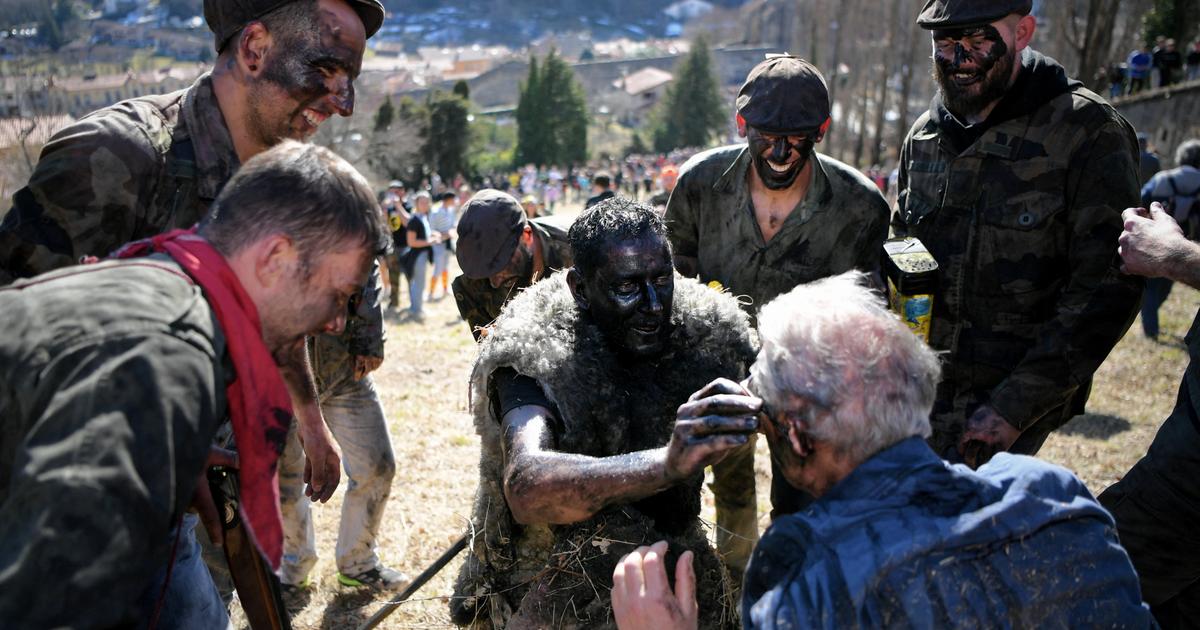Three villages in the Catalan Pyrenees celebrate their stirring Bear Festivals each February and are counting on the recent listing of this ancestral tradition as a UNESCO heritage site to revive their remote valley.
“We only have that!
We are in a territory a little withdrawn, in perdition, and we have only that which makes us live, our traditions.
We are proud of it and we are proud to be recognized by Unesco”
, says the mayor of Arles-sur-Tech, David Planas, with a smile.
On this February Sunday, with other inhabitants dressed like him as hunters, he is about to set off on the trail of the beast - "the Bone" in Catalan - a villager clad in a combination of brown fur and a richly toothed bear mask.
Each year, the Bear Festival season, a mock hunt celebrating the end of winter in the Haut-Vallespir valley, opens in Arles-sur-Tech.
It continues a few kilometers away, at Prats-de-Mollo-la-Preste, before ending a little higher up, at Saint-Laurent-de-Cerdans, on the southern slope of the Canigou massif, near the Spanish border.
Two other festivals in nearby Andorra have been labeled by Unesco.
Read alsoOur essentials on the Côte Vermeille, in the Pyrénées-Orientales
The legend of Jean de l'Ours
"It is essentially an affirmation of identity: to have taken part in this celebration signs the identity of young people and at the same time expresses the desire to perpetuate a tradition in relation to the vagaries of modern life", analyzes Robert Bosch, organizer of
the Arles-sur-Tech festival from 1986 to 1991. These immemorial festivals
"are structured around the legend of Jean de l'Ours who tells that a bear kidnapped and raped a shepherdess, whom he had from this woman a son named Jean, halfway between his wild father and a civilized man”
, explains Olivier de Robert, Pyrenean writer and storyteller.
Young people, often players of the rugby club which brings together the three villages, are the main actors in the ritual.
Sébastien Dalos, 39, bear for the fifth time this year at Arles-sur-Tech, fits the profile.
"It's an honor to do this character
," he rejoices.
"As long as these traditions continue, these moments of conviviality, just that, it makes our hearts feel better and we are looking forward to it all year round: can't wait for the bear to arrive!"
, he explains.
A participant disguised as a hunter watches, in Prats-de-Mollo-la-Preste, in the south-west of France, during the "Bear Festival", February 19, 2023. Valentine CHAPUIS / AFP
Many of his family members played roles at the party.
In her grandparents' house, their portraits hang on the wall.
"I have two little girls and a six-month-old son, it will be his first bear party, it's going to be special, we'll also take a family photo," he adds
.
"It's a valley that fights not to die"
On Sundays, the population gathers near the river with the hunters, their leader - the trapper - and his wife - La Roseta, a man made up as a woman.
Not far away, in the undergrowth, Sébastien Dalos puts on his costume.
"I'm hot potato"
, he confides between his bear teeth.
"As soon as I go to see the trapper and the Roseta arrive, that's it, I switch as one could say to the dark side, I'm in the bear."
Read alsoIn the heart of the Pyrenees, five winter experiences in a grandiose and preserved nature
A few minutes later, here he is, riding in the middle of the crowd, rushing at the hunters, tackling them.
He grabs the Roseta and other young women before rolling on the ground with them.
He thus goes from place to place, under boos, to the sound of firecrackers and music played by the cobla, a Catalan instrumental ensemble, before arriving on the church square.
There, in order for him to regain human form, locals mime his shaving with a fake wooden axe.
The bear then removes its mask and reveals its face.
Everything ends with music and Catalan dances, the sardanas, mixing the villagers.
A strong link between the approximately 5,000 inhabitants of the three villages, the festivals, strengthened by the inscription on the intangible cultural heritage of humanity by Unesco, want to shine outwards to bring the territory back to life.
The iron mines of Arles-sur-Tech or the espadrille factories of Saint-Laurent-de-Cerdans have disappeared.
"Here, it's a valley that is fighting not to die
," confides Marie-Rose Bouisset, former director of the nursery school in Arles, born in Saint-Laurent and married to a resident of Prats-de- Take it easy.
In this context, she says, the Unesco label,
"it's only happiness"
.

